Cold Chain Logistics: Management Challenges & Solutions
The supply chain is a term used to describe all the components required to transport goods from beginning to end, from production to the end...
12 min read
 BUKU Marketing
:
Jan 4, 2023 1:00:00 PM
BUKU Marketing
:
Jan 4, 2023 1:00:00 PM

When you decide to start an eCommerce business, you expect some cost involved. But what might come as a surprise is the costs associated with shipping. Without the ability to get your products to the customers who buy them, your Shopify store won’t make it very far. But shipping costs can take a massive bite out of your profit, especially if you don’t understand the ins and outs of the process.
Table of Content
2. How To Calculate Shipping Costs For Small Business
3. Getting The Cheapest Shipping Rates For Small Businesses
5. What To Avoid When Shipping Products
6. Offer Real-Time Shipping Rates
7. The Most Efficient Way To Save Money
Many eCommerce store owners get a bit of sticker shock when they realize how much of their profit margins are spent on shipping. Shipping costs are not limited to the price of postage. They encompass a list of items that you need to have in place to make the process smooth and successful, including
Type of packaging
Dimensions and weight of the package
Distance to destination
Speed of delivery
Shipping carrier
Package tracking
Shipping insurance
Customs and Duties
Handling costs
Return shipping
Damaged on delivery item replacement
Every one of the items has the potential to add to your final shipping cost. And if you’re wondering how any profit can be left on a sale after divvying up your cash to cover all these costs, you’re not alone.
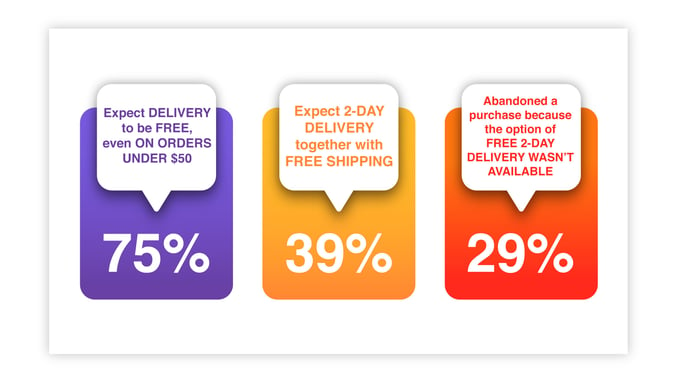
Let’s not forget the fact that 75% of consumers surveyed by the National Retail Federation said they expect delivery to be completely free, even on orders under $50. In addition, 39% of online consumers expect 2-day delivery with free shipping, and 29% have abandoned a potential purchase because the option of free 2-day delivery wasn’t available.
So, how is your Shopify store expected to survive with such a high overhead on shipping costs? The good news is that there are ways you can save money on shipping – if you know how to do it right. This article can help you learn how to find the cheapest shipping for small businesses and how to make sure both you and your customers are happy with the result.
If you’re new to eCommerce, you might feel a bit overwhelmed by the shipping process. However, it’s important to learn how shipping works if you want to find the cheapest shipping for a small business. You first need to understand the different ways products are shipped.
In short, shipping is getting an item from point A to point B. Exactly how you do that will depend a lot on what type of products you deal in, where your customers are located, and which shipping carrier (or carriers) you choose to work with.
In the United States, three major carrier companies dominate the shipping industry: the United States Postal Service (USPS), FedEx, and UPS. Suppose you’re planning on shipping items internationally. In that case, we suggest adding DHL to that list, as they have some of the most competitive rates when it comes to shipping overseas.
There are some key differences between these carriers, including overall costs. Let’s look a little closer at each of them.
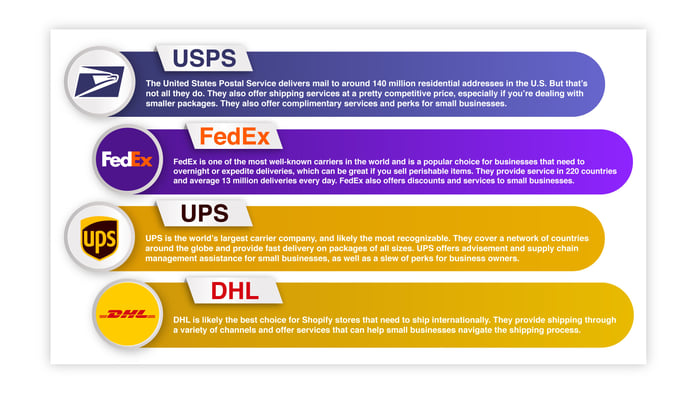
USPS – The United States Postal Service delivers mail to around 140 million residential addresses in the U.S. But that’s not all they do. They also offer shipping services at a competitive price, especially if you’re dealing with smaller packages. They also offer complimentary services and perks for small businesses.
FedEx – FedEx is one of the most well-known carriers in the world. It is a popular choice for businesses that need to overnight or expedite deliveries, which can be great if you sell perishable items. They provide service in 220 countries and average 13 million deliveries every day. FedEx also offers discounts and services to small businesses.
UPS – UPS is the world’s largest carrier company and likely the most recognizable. They cover a network of countries around the globe and provide fast delivery on packages of all sizes. UPS offers advisement and supply chain management assistance for small businesses and a slew of perks for business owners.
DHL – DHL is a great choice for Shopify stores that need to ship internationally. They provide shipping through a variety of channels and offer services that can help small businesses navigate the shipping process.
Maintaining profitability is one of the keys to success in retail. Suppose you want to have some money left over after making a sale. In that case, you must ensure that the costs of supplies and operations do not outweigh the final selling price of your item.
For example, you wouldn’t buy an item for ten dollars and then try to sell it for five. To understand exactly how to turn a profit in eCommerce, you will need to find the cheapest shipping for small businesses and understand how to calculate your total shipping costs. The following is a breakdown of the costs that contribute to your total shipping price.
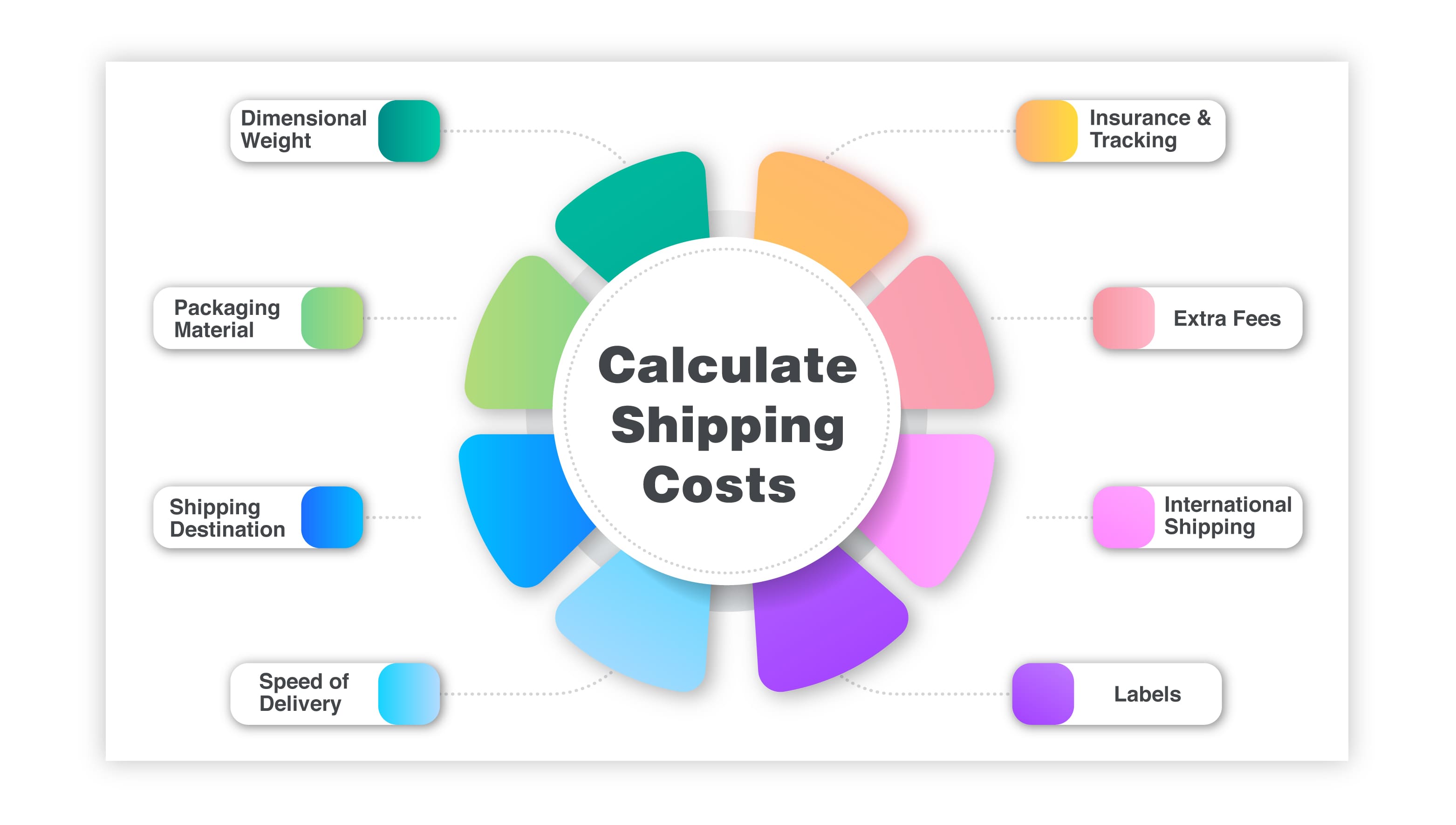
Most major carrier companies calculate shipping prices based on “dimensional weight,” or DIM. The dimensional weight of a package is calculated by multiplying the length and width of a package, which gives you the cubic size of the item. The cubic size is then divided by the rate type divisor, which typically depends on your contract with the carrier. The result of this calculation is the DIM. The carrier will use the DIM or the actual package weight (whichever is larger), to determine the final cost.
The type of packaging material you choose should match the products you sell. Some items will be fine in a poly mailer or flat-rate box. Others may need a sturdier packaging option. The type of filler or cushion you use in the package to prevent damage will also affect the final price. All these determinations will affect your final shipping price.
How far a package travels will affect your final shipping cost. A package that needs to travel 100 miles will cost significantly less than one that needs to travel 1,000 miles or farther. You can save money on shipping by using multiple fulfillment centers. This way you can split your inventory and select the warehouse that is closest to the specific delivery zone for each shipment.
How fast you want a package to arrive at its destination will affect the shipping cost. Ground shipping, priority shipping, first class shipping, two-day, three-day, and overnight – all these options have different costs.
Another cost that many retailers overlook is the cost of 3rd party insurance and tracking. Most major carriers will cover the cost of lost, stolen, or damaged items up to $100. Anything above that will require additional insurance. If you want the ability to track a package during its journey, that may also be an extra cost.
Some deliveries will require additional considerations, which could mean extra fees tacked onto the cost. Requiring a signature on delivery, fragile items, perishable items, and oversized packages could increase the final shipping cost.
If you plan to ship internationally, you will need to consider the “fully-landed” cost, which includes taxes, duties, and currency conversions in addition to the package cost.
Whether you ship from your home office or use a fulfillment center to house your products, you will need a shipping label for every package that goes out. Fulfillment centers will handle this process for you. However, if you ship from home, you will need to either print labels on your own or take packages to a local drop-off center and have them print the labels for you.
Feeling overwhelmed yet? Calculating your shipping costs means factoring in all the above-mentioned costs. Once you have that total cost, you can factor in your product cost, overhead, and desired profit margin to figure out how much to charge for a product. But to get the best advantage, you will want the cheapest shipping for small businesses. That means learning a few trade tricks that can save you a bit of money at the end of the day.
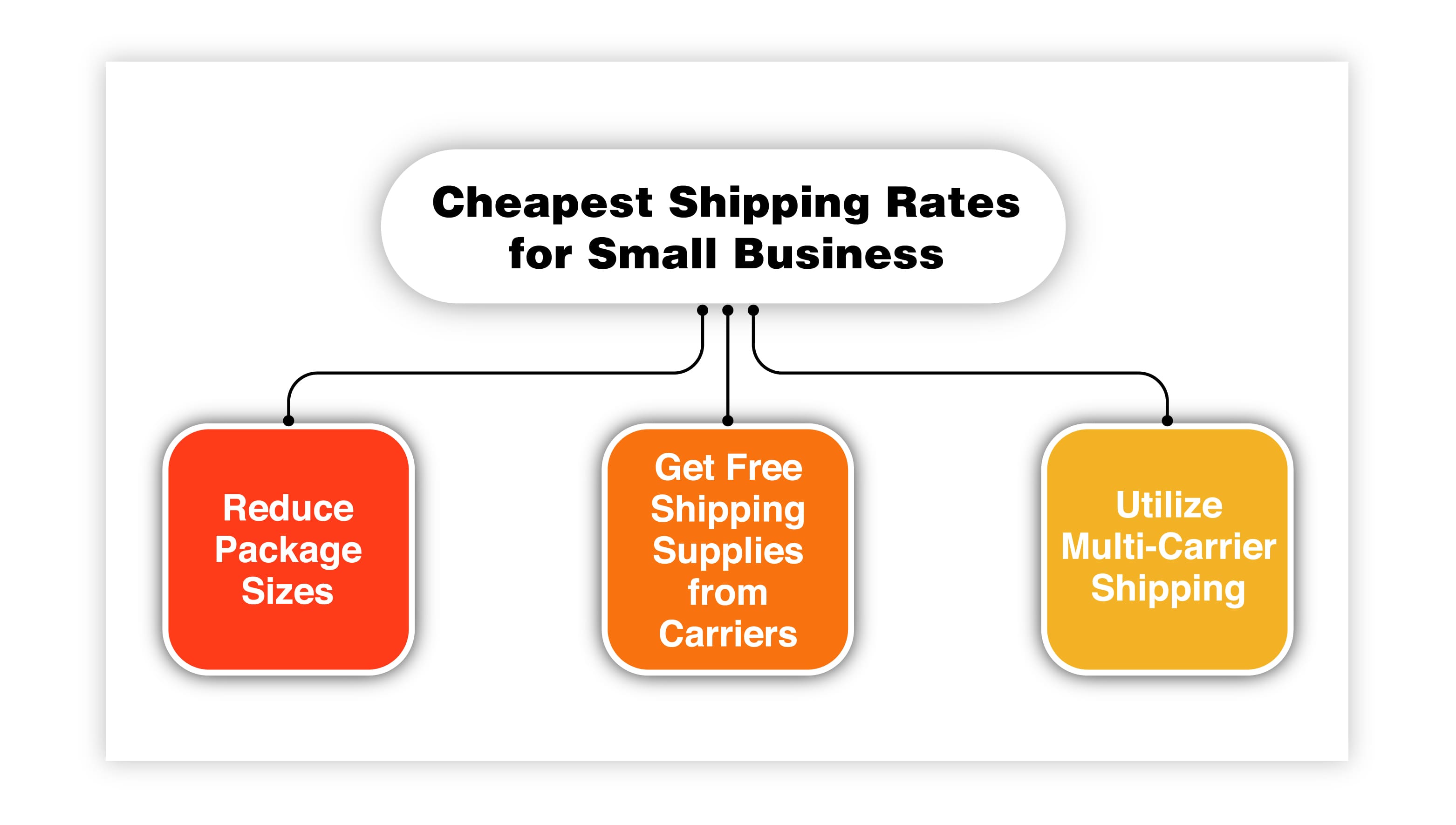
Carriers determine shipping rates based on actual or dimensional weight. So, it makes sense that choosing smaller package sizes means a lower cost. Many retailers make the mistake of thinking that a larger box filled with more packaging is safer and helps reduce damages. While certain items might benefit from additional cushioning, choosing a box that is too large for the item inside actually increases the likelihood that items will shift in transit and raises the risk of damage.
A smaller-sized box with the right cushion material is the best choice. Not only will it help protect the items inside, but it will get you a cheaper rate from carriers. If you're shipping multiple items at once, determine if it will be cheaper to ship them in individual boxes instead of one large, heavy box.
Small businesses get many advantages when negotiating with carriers, including valuable discounts and free shipping materials. Every carrier has a different process for accessing these free materials.
USPS – The USPS allows you to order supplies online and have them shipped directly to you, including a variety of free supplies like poly mailers, envelopes, tracking labels, and boxes. You can also visit your local post office, but we recommend checking online or calling ahead to ensure the materials you need are in stock. The USPS also allows bulk orders.
UPS – You can order supplies from UPS online as well, although you will need to create an account first. You can also visit a UPS retail location to pick up materials. UPS offers free boxes, labels, stickers, packaging, express envelopes, bags and pouches, hazmat supplies, and more for free. Be aware that extra-large boxes do not qualify and will need to be paid out of pocket.
FedEx – Similar to UPS, you can access free FedEx shipping materials by signing up for an account online or visiting a retail location. FedEx offers boxes, mailers, pouches, packing slips, labels, and more - all for free - for small businesses.
DHL – Small businesses can also access free supplies from DHL by visiting their website. They offer most of the same materials as other carriers, although finding a retail location may not be as easy.
These are not the only shipping carriers available, but they are the most used – and for a good reason. However, choosing just one to handle your shipping needs is not likely the best strategy. Relying on one carrier leaves you at risk for delays or out-of-service periods if something affects that carrier’s ability to provide service for any reason.
Also, some consumers simply have a favorite carrier and will be more likely to purchase from a retailer that uses their preferred company. 86% of abandoned carts occur because of shipping. You don’t want to add to that percentage. Using a multi-carrier shipping strategy is the best way to prevent delays and ensure you can satisfy every customer’s needs.
Trying to find the cheapest shipping for small businesses means weighing the pros and cons. You must find a balance between giving customers what they want while remaining profitable. One of the best ways to do both is to invest in third-party shipping insurance.
The upfront cost of shipping insurance might seem like an expenditure you can skip, especially if you’re looking to cut costs. But when you consider that one in every ten packages is damaged during shipping, paying that extra cost makes more sense.
The truth is that your customers will hold you responsible for their items arriving damaged, whether it was your fault or not. They will hold you at fault if you’re not willing to fix the problem by reshipping a replacement product for free. If you don’t want to eat those costs, then shipping insurance is the only way.
Here are a few benefits of third-party shipping insurance:
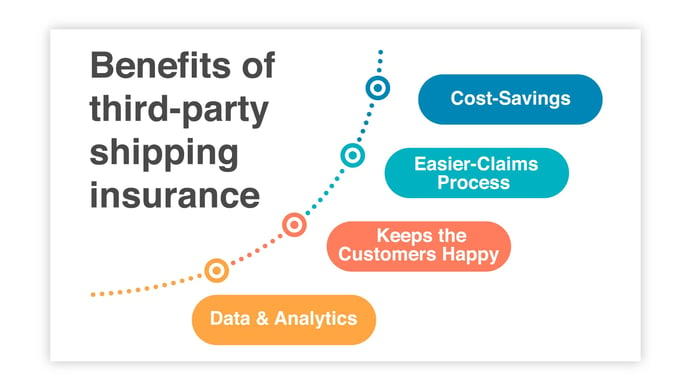
Cost-Savings - Most shipping carriers will provide limited insurance on the value of products up to $100. So, if you ship something with a value higher than that threshold and that item is damaged upon arrival, you will be responsible for the difference.
Easier-Claims Process – Relying on the carriers to process damage claims means dealing with each carrier individually whenever you need to make a claim. And because every carrier has a different claims process, this can quickly become an onerous task. Claims made through carriers often take longer to process as well. All claims will go through one platform when you use a third-party insurance company.
Keeps the Customers Happy – When customers know their purchases are protected and potential problems will be taken care of, they will be more comfortable shopping with your business. Also, adding shipping insurance usually includes free delivery tracking, so your customers will know exactly where their package is and when to expect it.
Data and Analytics – Most shipping insurance companies will provide you with analytics and data, such as pinpointing commonly damaged items or locations where frequent claims occur. Access to this information can help you improve your shipping process.
One of the best ways to find the cheapest shipping for your small business is to avoid mistakes. Errors in the shipping process will add to your overall costs and likely result in unhappy customers. Here are some of the most common shipping mistakes and how to avoid them.
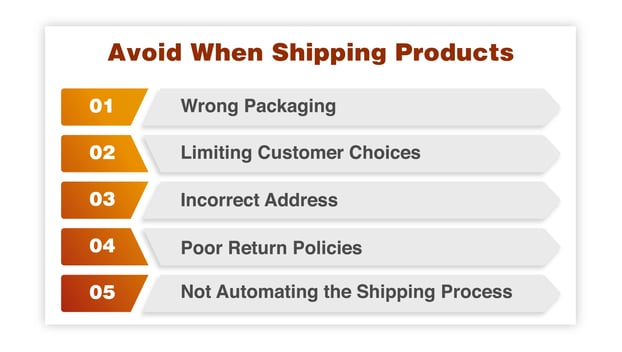
Choosing the wrong type of packaging or an incorrectly sized box is one of the major causes of shipping issues. It can lead to damaged products and add unnecessary costs to your shipping rate. Make sure you choose packaging that is best suited to the item. For instance, don’t ship apparel in a box when a bubble mailer or pouch would do the trick. Don’t ship fragile items in an oversized box without the appropriate cushioning materials. If you deal in outsized or heavy items, choose reinforced boxes to support the weight.
Forbes found that 77% of online shoppers have backed out of a purchase because of unsatisfactory shipping options, calling it the number one reason customers abandon carts. If you’re not offering your customers what they want, they will not struggle to find another online retailer who will. Offer various shipping options, including multiple carrier choices, free shipping, and expedited shipping, so that customers won’t be tempted to look elsewhere.
If there’s one piece of information critical to a successful shipping experience, it’s the customer’s address. While this might seem simple to get right, even a tiny mistake in the detail of an address can mean the difference between a customer receiving their package and that package ending up in the wrong zip code or even the wrong country. Packages lost to incorrect addresses will cost you money and customers. Carefully check and double-check addresses before finalizing a shipping label to ensure the package gets into the right hands.
A component of any retail business is processing returns. When customers decide they don’t want an item or are unsatisfied with a purchase, it’s up to you to make it right. A transparent and visible return policy is vital to successfully navigating this process, both for you and the customer. This ensures customers understand the requirements and restrictions of your return policy before purchasing an item because chances are they’re already looking for it.
Shipping can be complicated and may take up a lot of your time as a business owner. Consider automating your shipping process to save yourself headaches and cut back on the potential for error. You can use third-party software that integrates with your Shopify store to make the process faster, easier, and more accurate.
With all that goes into the cost of shipping, finding the cheapest shipping for small businesses can seem complicated. However, as important as shipping is to you as the business owner, it’s even more important to your customers. Online shoppers pay close attention to the cost of shipping as well because unless it’s offered for free, they will be the ones paying for it.
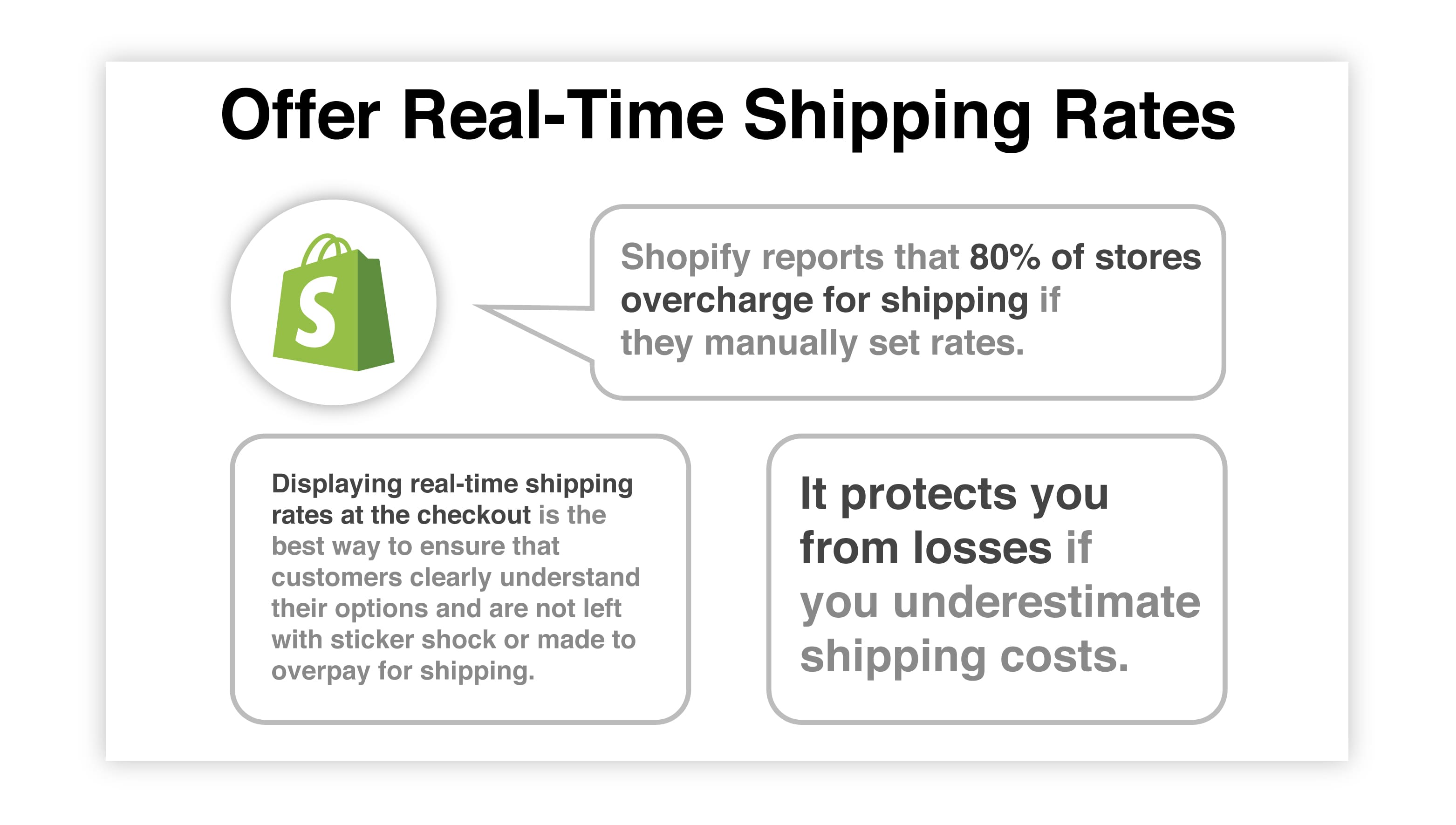
Shopify reports that 80% of stores overcharge for shipping if they manually set rates. Displaying real-time shipping rates at the checkout is the best way to ensure that customers clearly understand their options and are not left with sticker shock or made to overpay for shipping. It also protects you from losses if you underestimate shipping costs.
Real-time shipping costs account for every detail of each shipping order, including the carrier rate, package weight, dimensions, destination, and delivery timeframe. Using this information, customers are shown the actual final price to ship their purchase.
When you display real-time shipping costs to your customers at checkout, it allows them to compare rates based on the carrier and their specific needs. This transparency is key to helping customers make the best decision for themselves. It can persuade them to follow through with a purchase instead of wavering because they’re unsure of the shipping costs.
Automating your shipping process through integrated software is one of the best ways to simplify the experience for you and your customers. If you want to find the cheapest shipping for a small business, integrating Buku’s app IntelliRate with your Shopify store is the best way to do so.
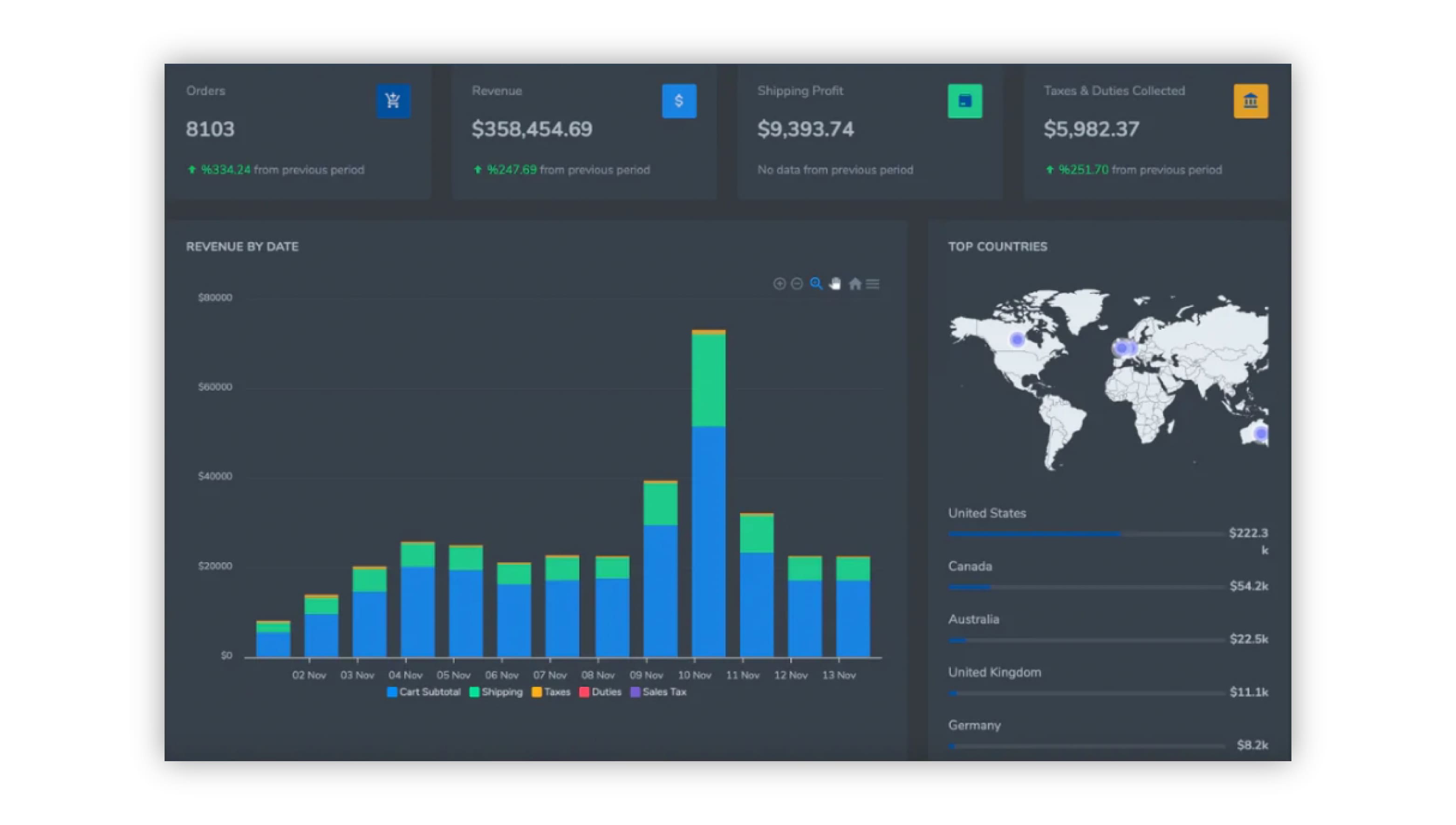
IntelliRate is an all-in-one shipping solution designed to help eCommerce stores save money, satisfy customers, and turn more conversions – and even turn shipping into an additional revenue stream. IntelliRate takes the work out of the shipping process and creates an experience that will keep customers happy, giving them the options, they want with a price they can see.
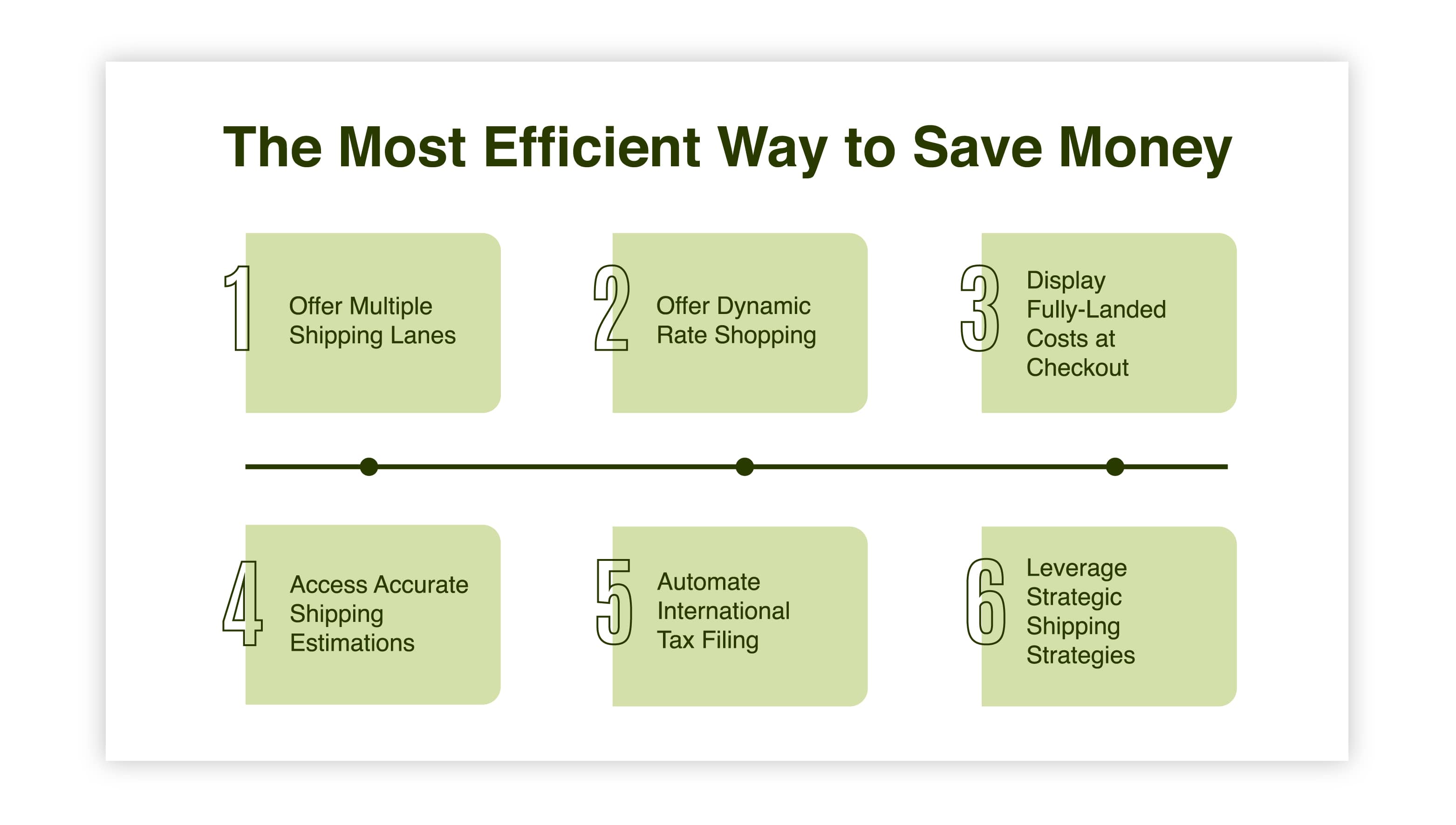
Shipping is a huge part of online retail. If you fail to get it right, your customers will take notice. The key to success is to plan and make smart choices that benefit your bottom line and keep customers coming back.
To make the most of your shipping process, you will need to understand the factors that add to your final shipping cost. Then, find the cheapest shipping for small businesses by leveraging strategies that will save you money on those costs.
Choose the right packaging so your products arrive in one piece and you’re not wasting money shipping oversized boxes. Get third-party insurance to protect yourself against lost, stolen, or damaged items. Have a clear and easily accessible return policy. And make sure there are no mistakes in the customer’s address so that packages don’t get lost in transit.
Most importantly, give your customers what they want. Satisfying customers is the basis of any good business. When it comes to shipping, customers want options. They want their choice of multiple carriers. They want to be able to decide when their packages will arrive. And they want to know exactly what to expect when it’s time to pay.
Using IntelliRate by BUKU can manage the details of your shipping process, save you time and money, and create trust with your customers. Live-rate shipping and dynamic rate options provide exactly what your customers want and expect. Give customers access to the right information and the options they want, and they will reward you.

The supply chain is a term used to describe all the components required to transport goods from beginning to end, from production to the end...

A smart warehouse is a large building where raw materials and other consumer goods are stored using machines, computers, comprehensive software, and...

Direct-to-consumer (DTC) fulfillment is a strategy that helps brands sell and deliver their products directly to customers more efficiently while...